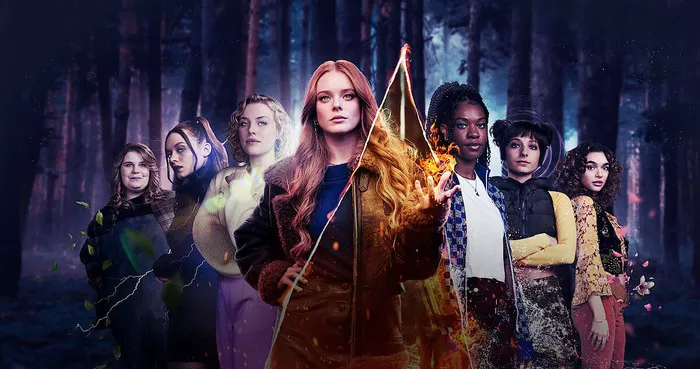In the realm of fantasy television, “Fate: The Winx Saga” has captured the imagination of viewers worldwide since its release. Drawing inspiration from the Italian-American animated series “Winx Club,” this live-action adaptation has sparked discussions about fate, magic, and the intricacies of teenage life. This article delves deep into the origins, themes, characters, and production of “Fate: The Winx Saga,” providing an in-depth analysis for fans and newcomers alike.
Origins and Evolution
“Winx Club,” created by Iginio Straffi, debuted in 2004 and quickly gained a loyal following with its blend of magic, friendship, and adventure. Set in the magical dimension of Magix, the series follows Bloom, a teenage girl who discovers she is a fairy and enrolls in Alfea, a school for fairies. With her newfound friends, Bloom battles evil forces while navigating the complexities of adolescence.
“Fate: The Winx Saga,” developed by Brian Young, reimagines the beloved animated series for a mature audience. Premiering on Netflix in January 2021, the live-action adaptation retains the essence of “Winx Club” while embracing darker themes and a more contemporary aesthetic. Set in the Otherworld, a parallel universe to Earth, the series follows Bloom as she attends Alfea and uncovers the truth about her past.
Exploring Themes
At its core, “Fate: The Winx Saga” explores the interplay between fate and free will. The characters grapple with their destinies while confronting personal challenges and external threats. Bloom, portrayed by Abigail Cowen, struggles to control her fiery powers and unravel the mystery of her birth parents. Meanwhile, her classmates – Stella, Musa, Terra, and Aisha – confront their own insecurities and desires.
The series also delves into the consequences of power and privilege. At Alfea, students from different backgrounds clash as they vie for supremacy in the magical hierarchy. The tension between the fairies and the specialists – warriors trained to combat threats – reflects broader social issues such as classism and discrimination. As the characters navigate their relationships and rivalries, they confront the realities of a world divided by magic and mistrust.
Character Dynamics
Central to the appeal of “Fate: The Winx Saga” are its complex and relatable characters. Bloom serves as the audience’s entry point into the Otherworld, grappling with identity and belonging. Her friendship with Stella, portrayed by Hannah van der Westhuysen, provides emotional support amidst the chaos of Alfea. Stella’s confidence and wit mask her insecurities, adding depth to her character arc.
Musa, portrayed by Elisha Applebaum, is a sensitive empath with a passion for music. Her friendship with Bloom evolves as they navigate their shared struggles and secrets. Terra, portrayed by Eliot Salt, grapples with her earth-based powers and the expectations placed upon her. Aisha, portrayed by Precious Mustapha, confronts prejudice as the only fairy of color at Alfea, highlighting issues of representation and diversity.
Production Design and Visual Effects
One of the standout features of “Fate: The Winx Saga” is its stunning production design and visual effects. The Otherworld is brought to life with lush landscapes, intricate costumes, and breathtaking magic. From the halls of Alfea to the depths of the Burned Ones’ realm, each location is meticulously crafted to immerse viewers in the fantastical world of the series.
The visual effects team spared no expense in realizing the characters’ magical abilities. Fire, water, air, and earth are depicted with stunning realism, adding a sense of wonder and danger to the narrative. The creatures of the Otherworld – from the ethereal nymphs to the terrifying Burned Ones – are brought to life with a combination of practical effects and CGI, enhancing the sense of immersion for viewers.
Critical Reception and Cultural Impact
Since its release, “Fate: The Winx Saga” has sparked a range of reactions from critics and audiences. While some praised its darker tone and character development, others criticized its deviations from the source material and lack of diversity. The series sparked discussions about representation in fantasy media and the responsibilities of creators to address social issues in their work.
Despite the mixed reviews, “Fate: The Winx Saga” has made a significant cultural impact, inspiring fan theories, fan art, and cosplay. Its diverse cast and contemporary themes have resonated with viewers around the world, sparking conversations about identity, power, and privilege. As the series continues to evolve, its legacy as a modern fairy tale for a new generation is assured.
Conclusion
“Fate: The Winx Saga” stands as a testament to the enduring appeal of magic and fantasy in popular culture. From its origins as an animated series to its reinvention as a live-action adaptation, the world of Alfea continues to captivate audiences with its compelling characters, immersive world-building, and thought-provoking themes. As fans eagerly await the next chapter in Bloom’s journey, one thing is certain – the magic of “Fate: The Winx Saga” will continue to enchant audiences for years to come.
























